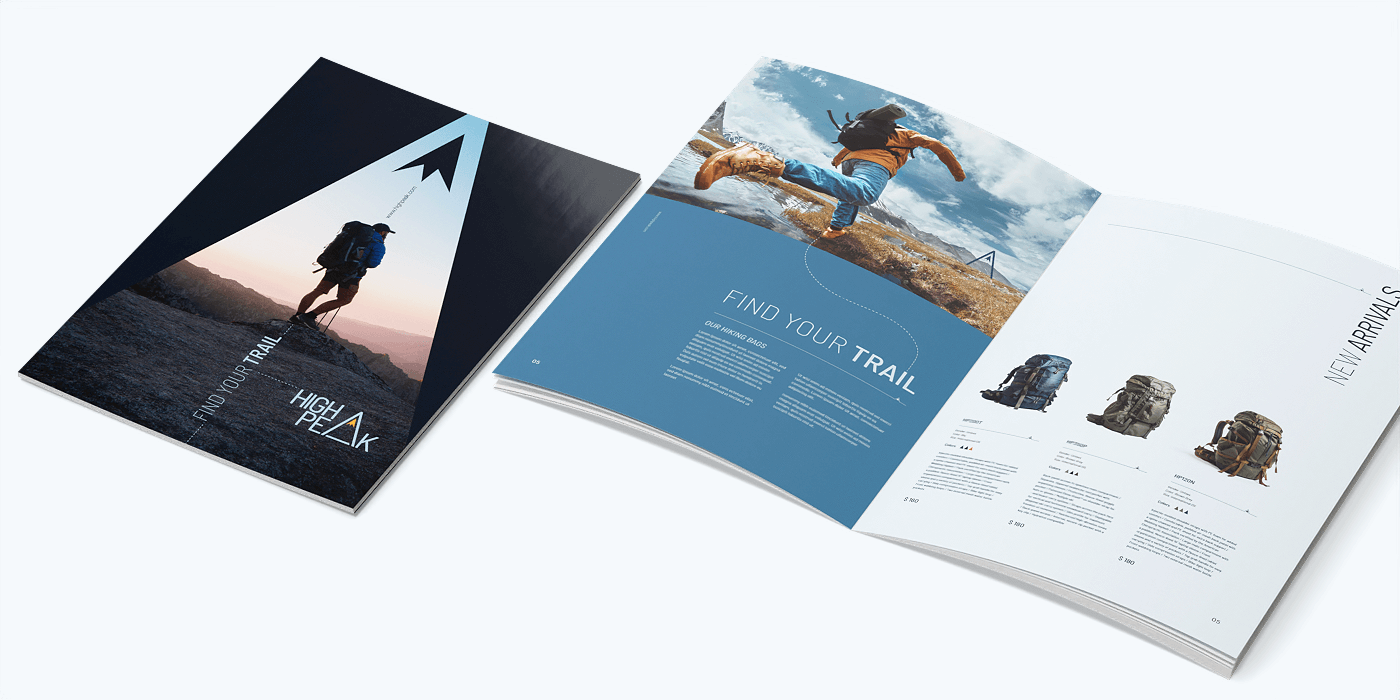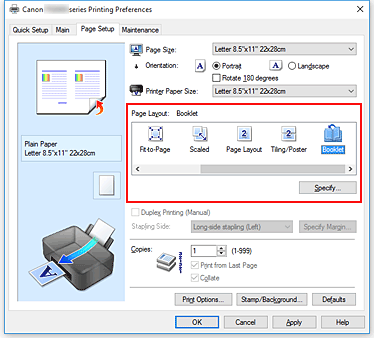Unlock the Power of Augmented Reality in Your Booklet Printing Projects
Unlock the Power of Augmented Reality in Your Booklet Printing Projects
Blog Article
The Crucial Overview to Recognizing Booklet Printing Options and Techniques
The process of pamphlet printing includes multiple considerations that can substantially impact the end product. From selecting the ideal style and dimension to understanding the nuances of binding approaches, each choice plays an essential role. Furthermore, elements such as paper supply and printing strategies further influence the efficiency of the pamphlet. As one browses these alternatives, it ends up being important to grasp how they adjoin and what that implies for the general outcome.
Understanding Pamphlet Dimensions and layouts
When considering booklet printing, recognizing the different formats and dimensions readily available is crucial for achieving the desired presentation. Brochures can be created in many layouts, including saddle-stitched, spiral-bound, and perfect-bound, each offering unique benefits. Typical dimensions vary from common letter (8.5 x 11 inches) to smaller options like A5 (5.8 x 8.3 inches), allowing for adaptability based upon material and target audience.Selecting the suitable dimension can affect both the format and viewers involvement. Bigger sizes could suit aesthetically driven material, while smaller layouts might be much more mobile and user-friendly. Additionally, the variety of pages impacts the option of binding technique, as thicker pamphlets might call for tougher bindings. Eventually, recognizing these facets enables an extra customized strategy, ensuring that the final item aligns with the designated message and visual, boosting the overall efficiency of the communication.
Picking the Right Paper Supply

Binding Techniques: Options and Factors To Consider
When it involves binding techniques for booklets, several alternatives are readily available, each with distinct benefits. Saddle stitch binding uses an economical service for thinner brochures, while perfect binding methods supply a more refined appearance for thicker publications. Wire-O binding attracts attention for its sturdiness and convenience of use, making it ideal for papers that call for adaptability.
Saddle Stitch Binding
Saddle stitch binding provides a practical and economical remedy for putting together brochures, making it a preferred option amongst businesses and authors. This binding technique involves folding sheets of paper in fifty percent and stapling them along the fold line, developing a well organized and neat look. Commonly appropriate for booklets with a lower page matter, saddle stitching is excellent for magazines, sales brochures, and instructional materials. The simpleness of this technique enables fast manufacturing and is usually preferred for short runs or advertising products. It is crucial to keep in mind that saddle stitch binding may not be ideal for thicker booklets, as the spinal column may not hold up under raised weight. Overall, it continues to be a reliable alternative for numerous printing tasks.
Perfect Binding Techniques
Perfect binding is a widely used strategy that provides a professional and refined finish to magazines and pamphlets. This technique entails gluing the web pages together at the spine utilizing a strong adhesive, enabling a tidy edge and the ability to hold a bigger number of pages contrasted to saddle stitching. Perfect binding is particularly suitable for thicker brochures, such as magazines and yearly records, where a sturdy, level spine is wanted. Additionally, it uses the option for a printed cover that can be created to boost aesthetic appeal. Factors to consider such as page matter, paper weight, and the planned use of the brochure must be taken right into account, as they can influence sturdiness and total quality.
Wire-O Binding Options
Wire-O binding, understood for its durability and flexibility, uses an exceptional option for brochures that call for very easy page transforming and an expert appearance. This binding technique employs a collection of metal loops that hold pages firmly, enabling them to lie level when open. It is particularly appropriate for brochures, discussions, and handbooks as a result of its durable nature. Wire-O binding is available in various colors and diameters, suiting different web page matters and densities. In addition, it permits the inclusion of covers and tabs, enhancing the brochure's overall aesthetic. Considerations for Wire-O binding consist of the choice of wire color, the size of the loops, and the extent of customization wanted, all of which can profoundly affect the final product's look and performance.
Digital vs. Offset Printing: Which Is Best for You?
When picking a printing approach for booklets, understanding the distinctions between electronic and counter printing is crucial. Digital printing makes use of modern innovation to generate top notch prints rapidly and cost effectively, making it find out this here excellent for brief runs or tasks needing quick turn-around times. It permits modification, giving the ability to publish on-demand with very little waste.In contrast, offset printing is a typical approach that stands out in generating big quantities with constant quality. It involves moving ink from a plate to a rubber blanket, after that to the paper, which causes specific details and vivid colors. Balance out printing generally requires longer configuration times and is more economical for bigger volumes.Ultimately, the option between digital and balance out printing depends on project demands, budget, and wanted amount. For small, time-sensitive jobs, digital may be the most effective option, while balanced out may be more suitable for larger, high-quality manufacturings.

Designing Your Booklet: Tips and Finest Practices
When creating a pamphlet, cautious attention to design, font style option, and color usage can greatly boost its performance. A well-structured design guides the reader's eye, while appropriate fonts assure readability and communicate the wanted tone. In addition, efficient usage of shade can stimulate emotions and emphasize key details, making the total design a lot more impactful.
Picking the Right Format
Exactly how can one successfully pick the right layout for a pamphlet? It is vital to review the booklet's function and target audience. A clean, organized design boosts readability and interaction. Utilizing a grid system can aid in aligning components constantly, producing a specialist appearance. In addition, integrating visual power structure through differing dimensions and placements of images and message can lead the viewers's eye and stress key details. It is additionally important to leave sufficient white area, which protects against congestion and permits for much better emphasis. Evaluating different designs via mock-ups can offer understanding right into just how the layout performs in real-world scenarios, making certain that the final product fulfills both visual and practical requirements. Useful Picking Proper Fonts
A well-chosen typeface can greatly improve the general layout of a booklet, complementing the design and reinforcing the content's message. The selection of fonts need to consider readability, especially for body message, as it assures the information comes to all viewers. Sans-serif fonts are usually chosen for digital formats, while serif font styles can provide a typical feeling in printed products. It's recommended to restrict font selections to two or 3 to maintain visual coherence. In addition, font style dimension plays a vital function; headings should be not overwhelming but unique, while body message should be comfortable for reading. When selecting typefaces, placement with the booklet's style and target audience is crucial for reliable communication and visual appeal.
Reliable Use of Color
Shade functions as an effective device in pamphlet layout, forming perceptions and guiding viewers emotions. It can stimulate feelings of depend on, excitement, or peace, relying on the colors picked. Developers ought to consider shade concept concepts, guaranteeing that the picked palette straightens with the pamphlet's message and target market. Using warm colors like red and orange can create urgency, while cooler tones like blue and environment-friendly foster tranquility.Additionally, comparison plays a vital duty; complementary colors can improve readability and aesthetic charm. Consistency in shade usage throughout web pages even more strengthens brand name identity and cohesion. Eventually, efficient more information color implementation not only records focus but also reinforces the pamphlet's function, making it a necessary element of effective style.
Finishing Touches: Coatings and Special Results
While many consider the content and design of a brochure one of the most vital elements, the ending up touches, such as finishings and special impacts, play an essential duty in improving its total appeal. Coatings can provide protection and toughness, making sure that the pamphlet withstands damage. Matte coatings supply an innovative, non-reflective surface, while shiny finishes can make shades show up more attractive and dynamic. Special effects, like embossing or foil stamping, include a tactile dimension that can create an unforgettable impact. These strategies can highlight details locations, drawing focus to essential information or developing aesthetic passion. In addition, UV finishing can give a high-shine coating that raises the general look.Together, these ending up touches not only improve the booklet's aesthetic yet also interact professionalism and reliability and interest to information, ultimately leaving a long lasting influence on the viewers.
Cost Considerations for Pamphlet Printing
Understanding the various expense considerations for pamphlet printing is necessary for services and organizations aiming to enhance their spending plans. Secret elements influencing costs consist of the choice of paper, ink, and binding approaches. Higher top quality products, such as superior paper or specialized inks, commonly increase the general expense. In addition, the dimension and page count of the brochure play a significant role; bigger brochures need even more resources and time to produce.Another vital consideration is the printing technique, whether digital or balanced out, as each has its very own prices structure and viability for different quantities. Organizations should additionally factor in style costs, which can vary based on intricacy and the use of professional solutions. Inevitably, shipping and handling costs can include to the overall, specifically for huge orders. By evaluating these aspects, organizations can make informed decisions that align with their financial capabilities while accomplishing the wanted high quality in their published products.
Frequently Asked Inquiries
What Are the Ecological Influences of Pamphlet Printing?
The environmental influences of brochure printing include logging from paper manufacturing, carbon emissions from transportation, and waste generation from thrown out products - Booklet Printing. Sustainable practices, such as utilizing recycled paper and environment-friendly inks, can alleviate these results
Just How Can I Make Certain Shade Accuracy in My Pamphlet?
To guarantee shade precision in a brochure, one need to utilize calibrated screens, use specialist color accounts, carry out examination prints, and choose top quality printing services that use color matching and proofing alternatives for finest results.
What Is the Common Turnaround Time for Booklet Printing?
The common turnaround time for pamphlet printing varies depending on the intricacy and amount - Booklet Printing. Generally, it varies from a few days to two weeks, influenced by aspects such as printing techniques and ending up needs
Exist Minimum Order Quantities for Booklet Printing?

Can I Publish Booklets in Numerous Languages?
Printing pamphlets in multiple languages is possible. Several printing solutions use alternatives for multilingual or multilingual designs, permitting reliable interaction. Mindful preparation guarantees that design elements accommodate various languages without compromising readability or looks. In addition, variables such as paper supply and printing strategies more affect the Get the facts performance of the pamphlet. When taking into consideration pamphlet printing, comprehending the different styles and sizes available is important for achieving the desired presentation. When picking a printing approach for brochures, comprehending the differences between electronic and balance out printing is necessary. Furthermore, the size and web page matter of the brochure play a considerable function; bigger brochures require even more sources and time to produce.Another essential consideration is the printing strategy, whether digital or offset, as each has its very own prices structure and viability for different quantities. The ecological effects of booklet printing consist of deforestation from paper manufacturing, carbon discharges from transportation, and waste generation from thrown out products.
Report this page